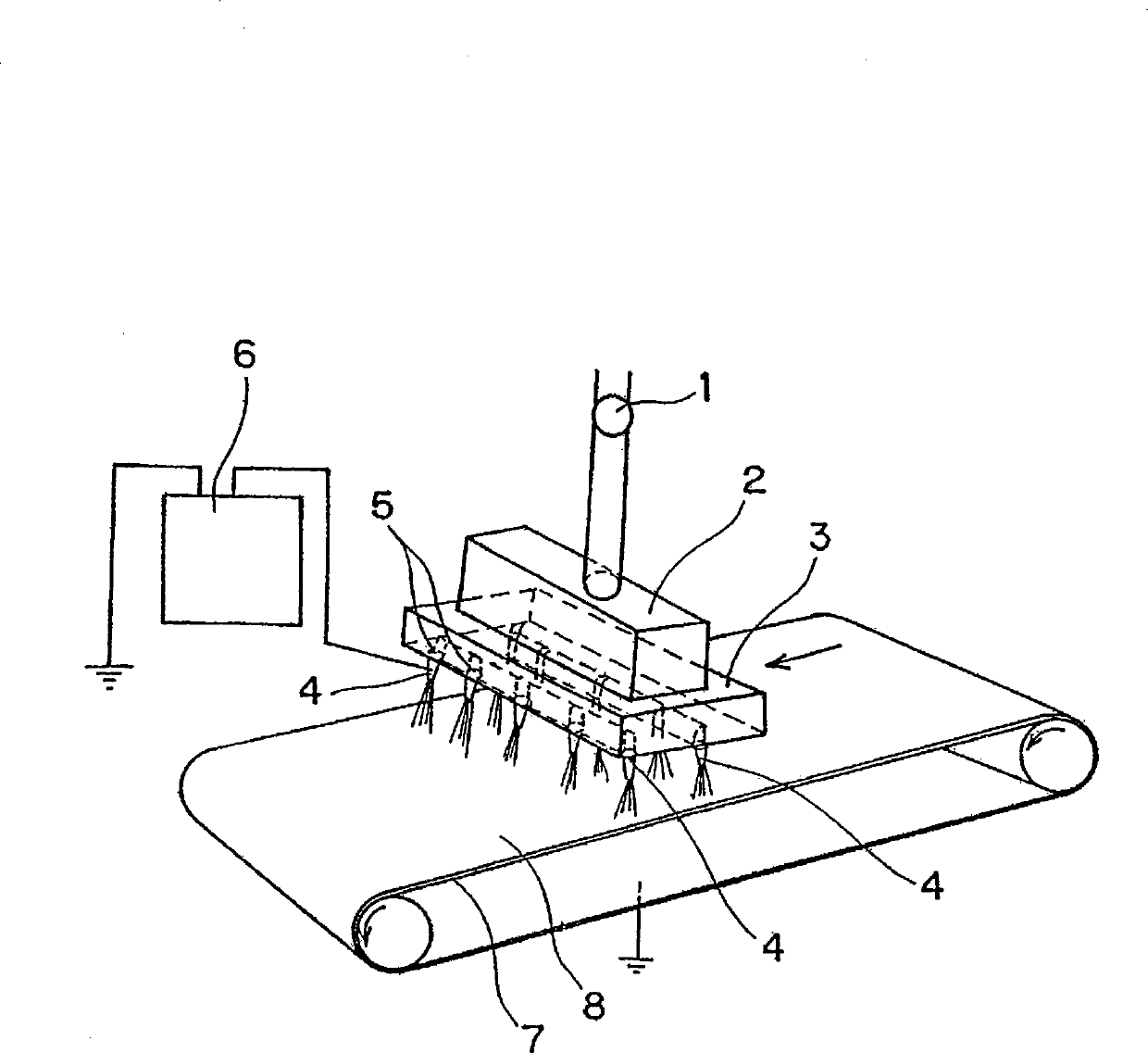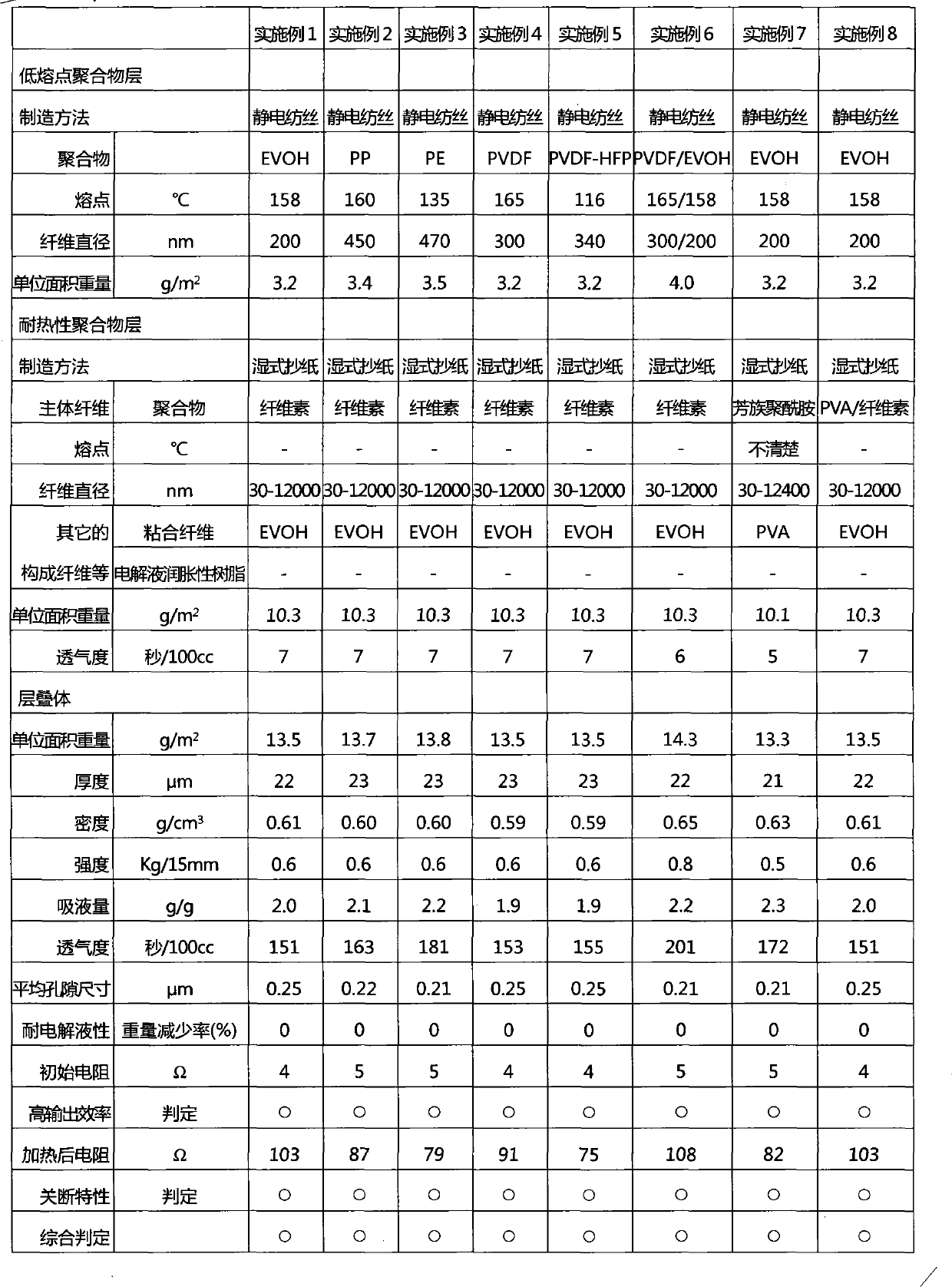Separator for non-aqueous batteries, non-aqueous battery using same, and production method for separator for non-aqueous batteries
一种电池、非水的技术,应用在非水电解质蓄电池、非水电解质、电池组零部件等方向,能够解决电解液起火性担忧、电池温度升高、设备热损坏等问题,达到操作性良好、初始电阻低、耐热性优异的效果
- Summary
- Abstract
- Description
- Claims
- Application Information
AI Technical Summary
Problems solved by technology
Method used
Image
Examples
Embodiment 1
[0136] (1) Production of heat-resistant polymer fiber layer (B)
[0137] Solvent-spun cellulose fibers of 1.7 dtex and 3 mm in length (manufactured by Cotoluses, Tencel) were beaten by a fiberizer and a pulper to obtain a CSF0 ml fibrillated product. This fiber was used as the main fiber, and ethylene-vinyl alcohol fiber (manufactured by Kuraray Co., Ltd., "S030") was added as the binder fiber in such an amount that the mass ratio of main fiber: binder fiber was 80:20. the slurry.
[0138] Use a cylinder paper machine to make paper from this slurry, dry it at a dryer temperature of 130°C, and produce a weight per square meter of 10.9g / m 2 , A heat-resistant polymer fiber layer with a thickness of 15 μm.
[0139] (2) Formation of low melting point polymer fiber layer (A)
[0140] First, an ethylene-vinyl alcohol copolymer (EVOH: EVAL-G manufactured by Kuraray Co., Ltd.) was put into a DMSO solvent so as to be 14% by mass, and then left to dissolve at 25° C. to obtain a spinn...
Embodiment 2
[0144] It produced similarly to Example 1 except having used polypropylene instead of the ethylene-vinyl alcohol copolymer as the low-melting-point polymer which forms the low-melting-point polymer fiber layer of Example 1 mentioned above.
[0145] Specifically, when producing low-melting nanofibers, a polypropylene resin (manufactured by Grand Polymer Co., Ltd.: B101) was melt-kneaded at 300° C. using a twin-screw extruder to obtain a spinning stock solution. figure 1 The spinning device was used for electrospinning.
[0146] In the spinning device, a needle with an inner diameter of 0.3 mm was used as the metal mouth 4, and the distance between the metal mouth 4 and the forming sheet take-up device 7 was 6 cm. In addition, the heat-resistant polymer fiber layer obtained in (1) of Example 1 was wound up on the forming sheet take-up device 7 . Then, the stock solution is extruded from the metal port with a conveyor speed of 0.1m / min and a prescribed supply amount, and a 40kV ...
Embodiment 3
[0148] It produced similarly to Example 2 except having changed the low melting point polymer of the low melting point polymer fiber layer of Example 2 into polyethylene (Mitsui Chemicals: 5202B). Table 1 shows the performance of the obtained separator.
PUM
| Property | Measurement | Unit |
|---|---|---|
| melting point | aaaaa | aaaaa |
| melting point | aaaaa | aaaaa |
| diameter | aaaaa | aaaaa |
Abstract
Description
Claims
Application Information
 Login to View More
Login to View More - R&D
- Intellectual Property
- Life Sciences
- Materials
- Tech Scout
- Unparalleled Data Quality
- Higher Quality Content
- 60% Fewer Hallucinations
Browse by: Latest US Patents, China's latest patents, Technical Efficacy Thesaurus, Application Domain, Technology Topic, Popular Technical Reports.
© 2025 PatSnap. All rights reserved.Legal|Privacy policy|Modern Slavery Act Transparency Statement|Sitemap|About US| Contact US: help@patsnap.com



